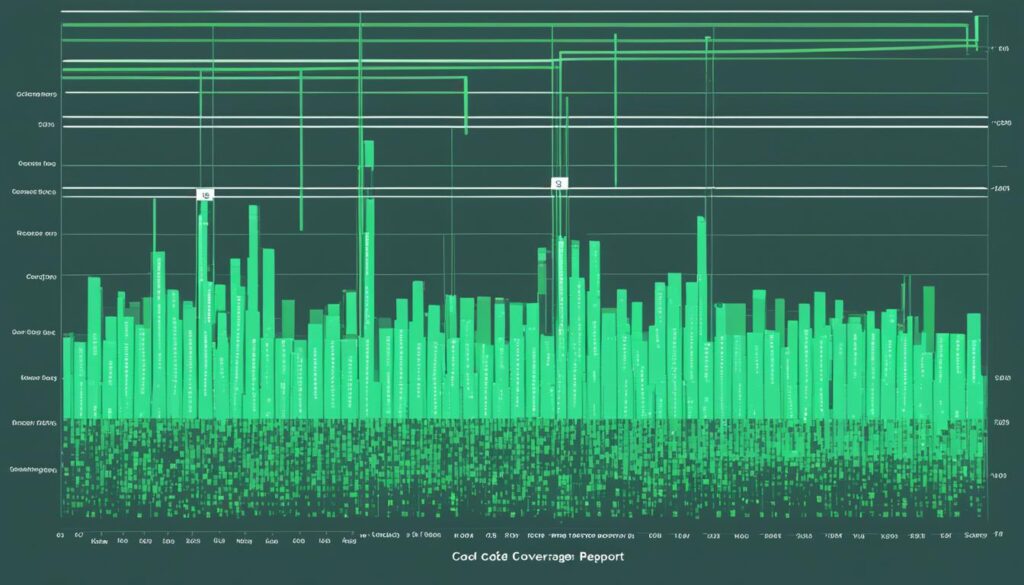Welcome to our article series, where we delve into the fascinating world of assertions and functional coverage in System Verilog. As engineers, we understand the critical role these concepts play in the verification processes of complex designs. By leveraging assertions and achieving comprehensive functional coverage, we can enhance the reliability and robustness of our System Verilog designs.
In this series, we will explore the intricacies of system verilog assertions and shed light on their significance in the verification processes. We will also discuss the importance of functional coverage, providing insights into its impact on the overall effectiveness of system verilog verification.
Table of Contents
Understanding System Verilog Assertions
System Verilog assertions play a crucial role in the verification processes of hardware designs. They serve as powerful tools to ensure design correctness and detect functional errors early in the development cycle. In this section, we will delve into the concept of assertions in System Verilog and explore how they contribute to the effectiveness of verification processes.
What are System Verilog Assertions?
System Verilog assertions are statements that express properties or conditions that must hold true in a design. They are used to define the expected behavior of a design and capture specific constraints or requirements. By specifying these assertions, verification engineers can automatically check the design against the expected behavior, enabling early detection of design flaws and facilitating debugging.
Assertions in System Verilog are written using the assert statement, which allows engineers to define properties, sequences, or assumptions about the design. These assertions are typically based on temporal logic and can express relationships between signals, states, or events within the design.
Benefits of System Verilog Assertions
- Early Bug Detection: System Verilog assertions enable early bug detection by providing continuous checks during design verification. They help identify issues that might otherwise go unnoticed until later stages of development.
- Improved Design Understanding: Assertions provide a clear and concise representation of the design requirements, making it easier for engineers to understand and validate the design behavior.
- Debugging Aid: When an assertion fails, it serves as a valuable debugging aid, providing detailed information about the failed condition and helping engineers quickly locate and resolve the issue.
- Increased Verification Confidence: By incorporating assertions into the verification process, engineers can enhance confidence in the correctness and quality of the design.
Now that we have a basic understanding of System Verilog assertions and their benefits, let’s move on to the next section, where we will discuss the importance of functional coverage in System Verilog verification processes.
Importance of Functional Coverage in System Verilog
Functional coverage plays a crucial role in the verification processes of System Verilog designs. It allows engineers to determine the extent to which the design has been tested and ensures that all functional scenarios have been adequately exercised. By systematically tracking the functionality of the design, functional coverage provides valuable insights into the verification progress and helps identify areas that require further testing.
Functional coverage serves as a metric to measure the completeness of the verification process, helping engineers assess the efficiency and effectiveness of their testbench. It allows them to identify gaps in test cases and modify them accordingly, ensuring that all corner cases and edge scenarios are covered. This comprehensive coverage minimizes the risk of bugs and improves the overall quality and reliability of the design.
Purpose of Functional Coverage
The primary purpose of functional coverage is to capture and measure the achievement of specific functional requirements. It enables verification engineers to define coverage goals based on the design’s specifications and track the progress towards meeting those goals. By ensuring that all required functionalities are adequately exercised, engineers gain confidence in the correctness of the design implementation.
Functional coverage also assists in identifying areas of the design that have not been thoroughly verified. This information helps prioritize testing efforts, allowing engineers to allocate resources effectively and focus on the critical aspects of the design. By addressing these gaps, engineers can increase the coverage and ultimately improve the quality and robustness of the design.
Measuring Functional Coverage
Functional coverage is typically measured using coverage metrics such as branch coverage, toggle coverage, and state coverage. These metrics quantify different aspects of the design’s functionality, providing a quantitative assessment of the verification progress. The coverage data is collected during simulation, and the results are analyzed to determine the coverage achieved.
Engineers can define and track coverage goals using coverage models written in System Verilog. These models specify the expected behavior of the design and capture the coverage points to be tracked. By running simulations and monitoring the coverage data, engineers can gauge the completeness of the verification process and make informed decisions about additional testing required.

Benefits of Functional Coverage
The incorporation of functional coverage in the verification processes brings several key benefits. Firstly, it helps ensure that all design functionalities are adequately tested and verified, minimizing the risk of undetected bugs. By providing quantitative data on the extent of coverage achieved, functional coverage enables engineers to make data-driven decisions and improve the efficiency of the verification process.
Functional coverage also enhances collaboration among verification engineers by establishing clear verification goals. By defining coverage points and tracking their achievement, engineers can easily communicate and align their efforts. This transparency fosters a more systematic approach to verification and facilitates effective team coordination.
In conclusion, functional coverage is an integral part of System Verilog verification processes. By measuring and tracking the achievement of specific functional requirements, it ensures comprehensive testing and improves the quality and reliability of the design. The next section will delve deeper into the various types of assertions available in System Verilog.
Types of Assertions in System Verilog
In System Verilog, there are various types of assertions that are used to ensure the correctness and reliability of designs. These assertion types provide a powerful means of capturing and verifying design intent, improving the overall verification process.
Here are the different types of assertions commonly used in System Verilog:
Immediate Assertions
Immediate assertions are used to specify temporal relationships between signals in a specific point in time. They are evaluated immediately when the condition is encountered and provide instant feedback on the correctness of the design. Immediate assertions play a crucial role in catching errors during simulation.
Concurrent Assertions
Concurrent assertions are used to specify temporal relationships between signals over a range of time. These assertions are continuously evaluated during the simulation and provide continuous feedback. Concurrent assertions are especially useful in identifying timing violations and checking complex timing conditions.
Property Assertions
Property assertions allow designers to express design properties and specify the expected behavior of a design. They are used to define functional requirements and define checks to ensure compliance with those requirements. Property assertions provide a systematic and structured way to verify the correctness of designs.
Sequence Assertions
Sequence assertions are used to define temporal sequences of events within a design. They allow designers to capture complex behavior and specify order-dependent requirements. Sequence assertions enable comprehensive checking of intricate design interactions and ensure that expected behaviors are correctly implemented.
By utilizing these various types of assertions, engineers can effectively verify the behavior and correctness of their System Verilog designs. Each assertion type serves a specific purpose and contributes to the overall verification process, improving the quality and reliability of the final product.
Achieving Comprehensive Functional Coverage
When it comes to verification processes in System Verilog, achieving comprehensive functional coverage is of utmost importance. By ensuring that the design under test (DUT) is thoroughly exercised, engineers can identify and rectify potential bugs or issues early in the development cycle, saving time and resources in the long run.
There are several strategies and techniques that can be employed to achieve comprehensive functional coverage:
1. Requirements-Based Testing
By aligning the verification process with the specified requirements, engineers can verify that the DUT functions as intended. This approach ensures that all expected functionalities of the design are thoroughly tested.
2. Scenario Planning
Creating different test scenarios based on potential use cases allows engineers to cover a wide range of functional behaviors. By designing tests that cover both normal and edge cases, engineers can ensure that the DUT performs reliably under various conditions.
3. Random Testing
Utilizing random stimuli to drive the DUT can help uncover unexpected bugs or issues. Random testing can provide a broader coverage of the design space and expose corner-case scenarios that may have been overlooked during pre-defined testing.
4. Coverage-Driven Verification
Implementing comprehensive coverage metrics and monitors can help track the extent to which the DUT has been exercised. By setting coverage goals and monitoring progress, engineers can ensure that all aspects of the design are adequately verified.
These strategies, when applied in combination, allow engineers to achieve comprehensive functional coverage in System Verilog verification processes. By addressing all potential functional scenarios and thoroughly exercising the DUT, engineers can have confidence in the robustness and reliability of their designs.

| Strategie | Advantages | Limitations |
|---|---|---|
| Requirements-Based Testing | – Ensures alignment with expected functionality – Thoroughly tests designated requirements |
– May overlook unaccounted scenarios |
| Scenario Planning | – Covers a wide range of functional behaviors – Tests both normal and edge cases |
– May not uncover all possible scenarios |
| Random Testing | – Uncovers unexpected bugs or issues – Provides broader coverage of the design space |
– Requires careful test environment setup |
| Coverage-Driven Verification | – Ensures comprehensive coverage of the design – Tracks verification progress |
– Requires defining metrics and goals |
Conclusion
In conclusion, assertions and functional coverage play a vital role in enhancing System Verilog verification processes. By incorporating assertions into the design code, engineers can define specific behavior requirements and ensure the correctness of the system. These assertions act as automated checks, providing valuable feedback and reducing the time required for debugging and troubleshooting.
Furthermore, functional coverage allows engineers to measure the degree to which all functional scenarios have been exercised during simulation. By analyzing the coverage results, developers can identify gaps and improve the testbench, thereby increasing the probability of detecting design issues. This comprehensive coverage enables engineers to have more confidence in the reliability and quality of their designs.
By understanding and implementing assertions and functional coverage effectively in System Verilog, engineers can achieve a more robust and reliable design. These techniques not only enhance the verification processes but also lead to significant time and cost savings. As the complexity of designs continues to increase, the importance of assertions and functional coverage cannot be overstated – they are crucial components in achieving success in System Verilog verification.

